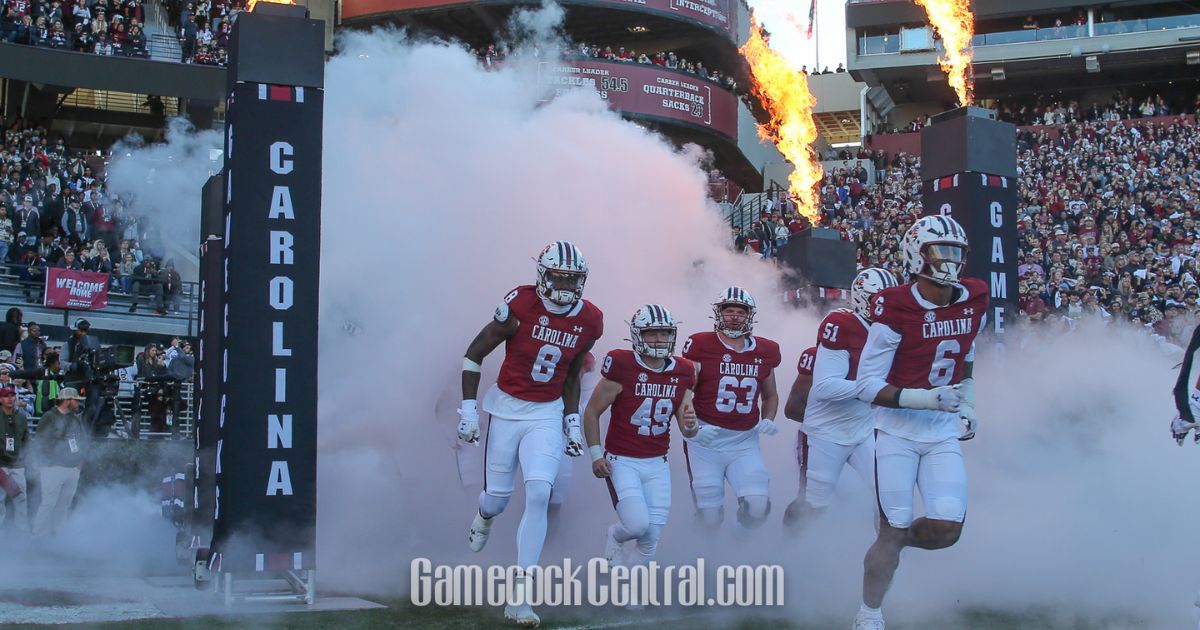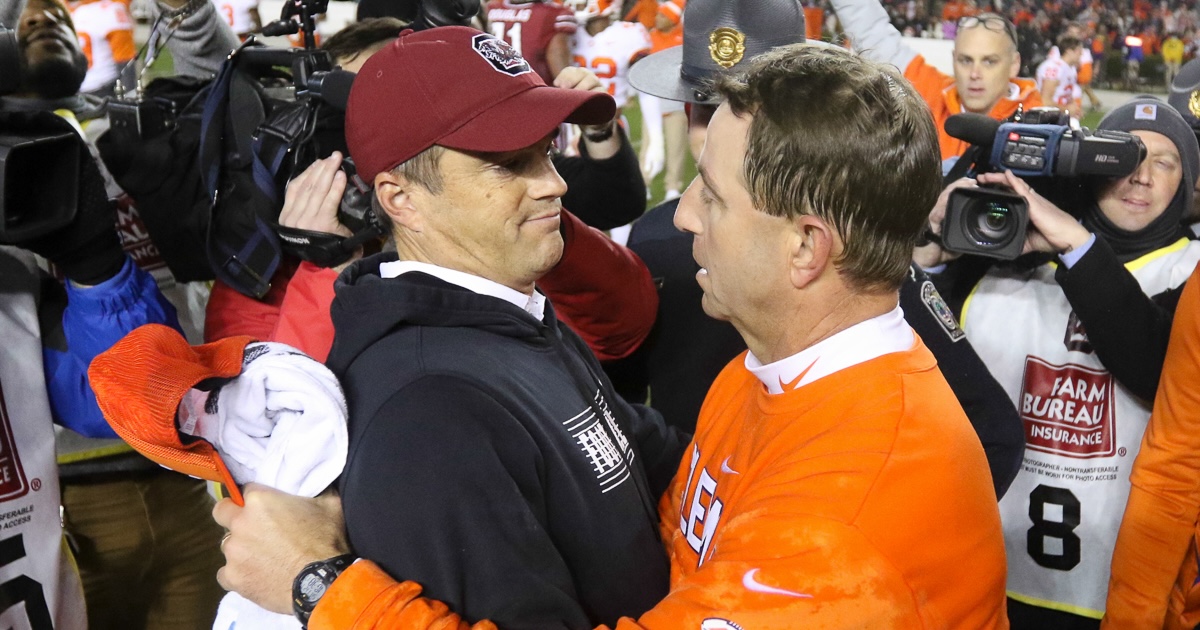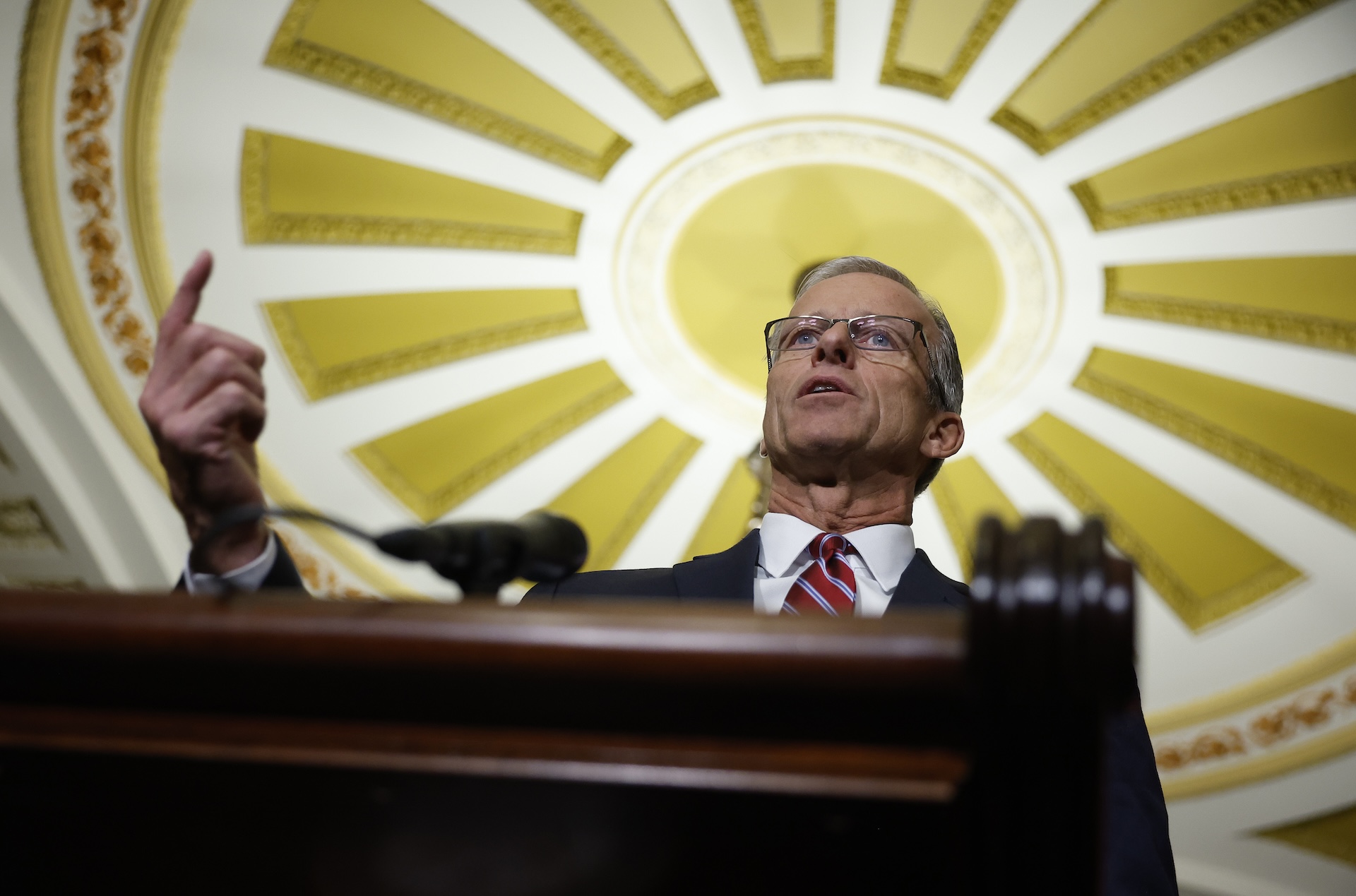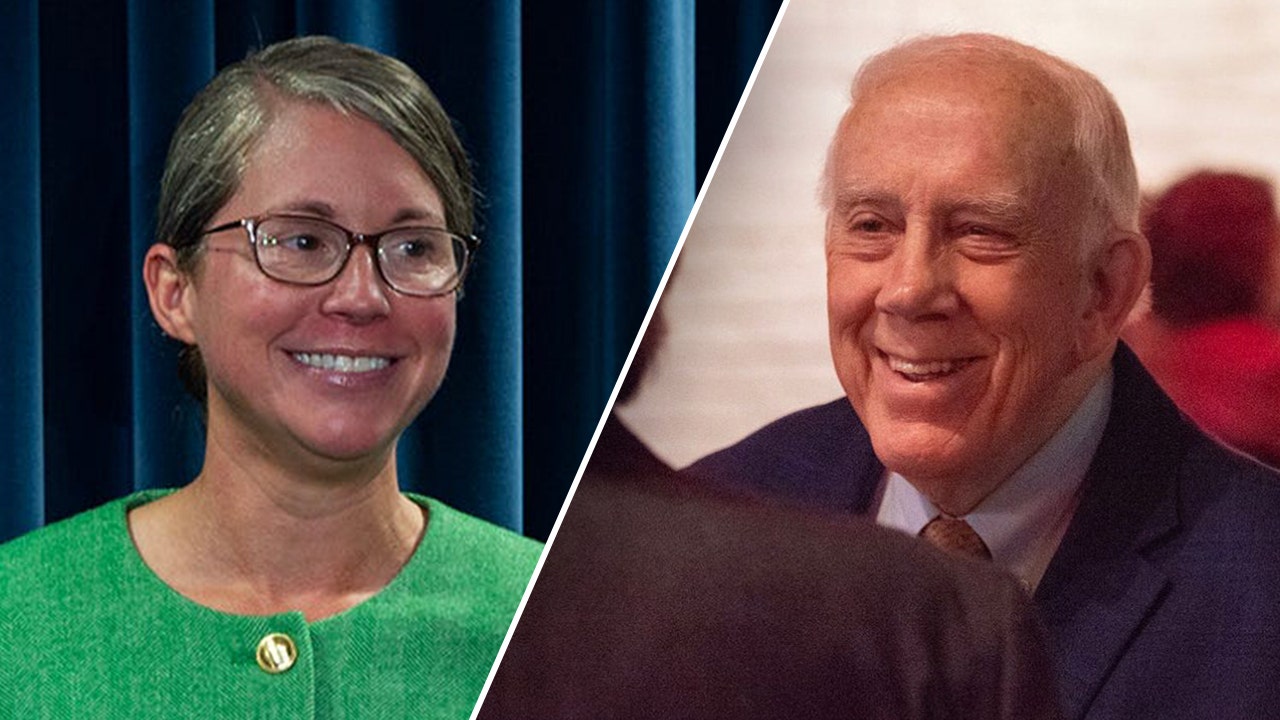South-Carolina
McCarthy’s fall marks new low in the speakership’s declining status

The fall of House Speaker Kevin McCarthy is surely historic, deserving of both the obsessive media attention and the doleful warnings it has spawned.
Shocking as this week’s vote was, we should have been better prepared for it.
It is true that no previous speaker had been ousted by a vote of the whole House in the whole history of the United States. But it should not have been a surprise. We might have seen it coming, short term and long.
In the immediate timeframe, it has been widely noted thatthe rules change made in January that allowed just one House member to force a vote on removing the speaker had meant McCarthy’s days were numbered.
A single rank-and-file member can challenge the House’s presiding member, who holds an office created by the First Article of the Constitution. In an era of narrow partisan majorities, that rule makes a speaker’s removal a daily prospect – and perhaps an inevitability.
But taking a broader view, the status of the speakership has been declining for years – arguably for decades. McCarthy’s ouster is the most extreme example, but it is also just the latest in a sequence of events that have increased the vulnerability of the office and thus made the speaker weaker.
The next House speaker will be the fifth since 2010
J. Scott Applewhite / AP
/
AP
When House Republicans name a new speaker — perhaps as early as next week — it will be the fifth time the big gavel has changed hands since the “Tea Party” GOP takeover after the 2010 election. That means the previous four speakerships will have lasted an average of three years and two months each.
Three of those exiting speakers were Republicans (McCarthy, Paul Ryan and John Boehner) who failed to placate the hardest core of populist conservatives in the party. Boehner had become speaker in 2011 and tried to both resist the Obama administration and make deals with it. He angered the most aggressive partisans in his own ranks and in 2015 was threatened with a “motion to vacate the chair” – the same weapon used this week to remove McCarthy. Boehner chose not to force a vote to oust him on the House floor, as McCarthy did. Instead, he simply resigned and left Congress.
His successor at the time was Ryan, chairman of the Ways and Means Committee, who did not seek the speakership but had it pressed upon him by exasperated fellow Republicans who could not agree on anyone else. Ryan ran into the same problems as Boehner had and McCarthy would. He also found it difficult to deal with President Donald Trump, first as the party’s nominee in 2016 and then as the nation’s leader. Midway through Trump’s term, Ryan chose to retire after less than four years as Speaker.
Taking the trend a bit further back, it may be said that McCarthy’s truncated tenure marked the latest in a cavalcade of speakers who met with unhappy endings. His predecessors in the job were repudiated by voters, forced out by their colleagues or enveloped in controversy before or after their departures.
The one exception would be the House’s current Speaker Emerita Nancy Pelosi, the San Francisco Democrat who had two turns at the top, the more recent from January 2019 to the start of this year. Pelosi had been speaker in the last two of George W. Bush’s White House years and the first two of Barack Obama’s. With Obama in the presidency and Democrats controlling the Senate, Pelosi was able to pass the Affordable Care Act and other major legislation.
But after shouldering the controversies, she bore the brunt of a 63-seat loss in 2010, the party’s worst drubbing in more than 70 years. Unlike most former speakers, however, she did not retire upon giving up the big gavel. She stood for reelection each cycle until, eight years later, Democrats reclaimed the majority.
So she was again speaker in the 117th Congress, managing the House that impeached Trump and passed much of President Biden’s program. Then once again, she gave the gavel back when her party lost its majority in the elections of 2022. And, once again, she declined to retire and has announced her candidacy for 2024, when she will be 84.

Chip Somodevilla / Getty Images
/
Getty Images
Hastert was the longest serving Republican speaker
Just before Pelosi, Republican Dennis Hastert, an Illinois Republican found himself elevated from the middle ranks of the House leadership to speaker in 1998. Hastert was an exception to the recent brevity of speakerships. He served for eight years, the longest any Republican has had the job –including the legendary “czars” of a century earlier.
Hastert had seemed to have reestablished the status of the speakership until a 2006 scandal over a junior Republican’s relationships with male pages worsened the party’s expected losses in that fall’s election. The GOP lost its majority and Hastert retired soon thereafter.
But after leaving office, Hastert also became the highest-ranking U.S. public official ever to go to jail. He served 15 months on federal charges stemming from hush money he was paying to cover up accusations of sexual abuse from his days as a high school teacher and wrestling coach.
The ignominy at the end of Hastert’s career was surprising because he had been elevated to speaker as a noncontroversial, low-profile and trusted senior member in 1999. Other candidates at the time were sidelined by, among other problems, media revelations about marital infidelities.
The Republicans needed a new speaker at that time because they had decided not to re-nominate their own leader, Speaker Newt Gingrich, for another term at the top. That highly unusual step was taken in a closed-door conference they held after unexpected losses in the congressional elections of November 1998.
Hastert had been a key part of the leadership’s “whip team” that measured and encouraged party unity. It also helped that he had not been part of an abortive coup d’état against Gingrich in the summer of 1997. Other Gingrich lieutenants who had been involved were passed over in the search for a replacement.
Going back to Gingrich
Gingrich, a former college professor from Georgia, had been the architect of the party’s “Contract with America” strategy in the 1994 campaign. He became its unofficial spokesman, from his post as the GOP’s No. 2 official (minority whip) and leading candidate to succeed the party’s longtime leader, Bob Michel of Illinois.
The Contract strategy was mediagenic and popular. But the GOP that year also benefited from redistricting that made Republicans more competitive in many parts of the country but especially in the South. They also benefited from the “buyer’s remorse” voters seemed to be feeling toward the first-term President Bill Clinton and some of the legislation his Democrats had enacted in Congress.
The bottom line was a wide-ranging rout in the November 1994 midterms that ended 40 years of Democratic majority in the House and also delivered the Senate to the GOP. Gingrich was installed as the first Republican speaker since the early years of the Dwight Eisenhower administration.
Gingrich’s time in that job proved stormy, however, including government shutdowns that were the longest in history at the time. Gingrich himself was seen as petty in his handling of disputes with Clinton, who managed to win a second term in the White House in 1996.
Gingrich’s standing among his colleagues had been unquestioned after the 1994 victories. After their party’s 40-year sojourn in the “wilderness” of minority status, Gingrich was their Moses. But two often stormy years later, after losing seats in two elections in a row, Gingrich’s troops rebelled and forced him out.

A pivotal role since the 1980s
Democrats, for their part, relished seeing Gingrich take a hard fall, as he had expended such effort against the previous two speakers. In 1994 he had pilloried Speaker Thomas Foley, a rather scholarly and measured presence in the job, in part for Foley’s role in a lawsuit against a referendum in his home state of Washington.
But Gingrich had risen in the eyes of many conservative partisans prior to that with his relentless campaign against Foley’s predecessor, Speaker Jim Wright of Texas. Wright was a World War II veteran who had climbed the ladder in the House since 1954, eventually becoming Majority Leader and then, in 1987, taking the final step up to the speakership.
Gingrich had already made his name in the chamber as a critic of Congress and of the Democratic majority, alleging widespread and systemic corruption. When Wright became speaker, Gingrich filed an ethics complaint that came to focus on the sale of Wright’s book, Reflections of a Public Man, in bulk to various lobbying interests. In April 1989, the House Ethics Committee formally accused Wright of five counts of rule violations. He resigned in an emotionally charged speech on the floor a month later. Asked later for his feelings about Gingrich, Wright compared them “to the feelings of a fire hydrant about a dog.”
Wright had succeeded Speaker Thomas P. “Tip” O’Neill, who served in the job for a decade beginning in 1977. O’Neill was perhaps the last folkloric figure in the role, and the last to leave the office at a time entirely of his own choosing — handing the ceremonial gavel to a member of his own party. No one has held the job for as long since, and no one has been able to leave in the same manner.
Copyright 2023 NPR. To see more, visit https://www.npr.org.

South-Carolina
ESPN's College Football Playoff Predictor has updated again. Here's where South Carolina stands

ESPN.com’s College Football Playoff predictor isn’t perfect because it applies analytics to a situation that ultimately will be decided by a committee of humans. But it does provide a nice guide and discussion piece about which teams have the best chance to make this year’s College Football Playoff.
Because of that human element, the predictor has been updating twice each week, once on Sunday to account for Saturday’s games and again after the latest CFP rankings are released.
[More for subscribers: What latest rankings mean for South Carolina’s College Football Playoff chances]
While the Gamecocks won their game on Saturday and got a lot of help from the teams around them last week, the logjam of SEC teams ahead of them in Tuesday’s rankings is still limiting their upside at this time.
With the committee putting South Carolina behind fellow three-loss SEC teams Alabama and Ole Miss, the predictor currently gives South Carolina a 20 percent chance of making the 12-team field, which is three percentage points lower than its chances in Sunday’s update.
The Gamecocks do, of course, have one more huge opportunity to pad their resume when they travel to Clemson this weekend to renew the annual rivalry in what may be the biggest game in the matchup’s history.
Beat the Tigers, who are currently No. 12 in the CFP Top 25, and South Carolina’s chances of making the playoff jump to 46 percent, according to the predictor.
While that’s just under a coin flip, it’s also 12 percentage points lower than it was in Sunday’s update.
South Carolina is still very much in the hunt but is going to need to win and play very well against Clemson and get more help around it.
[GamecockCentral: $1 for 7 days]
As a reminder, the CFP committee’s top 12 teams won’t correlate exactly with the 12-team field.
The CFP will consist of the top five highest-ranked conference champions and the next seven highest-ranked at-large schools. The top four conference champions will receive the top four seeds and a first-round bye. The fifth conference champion will be seeded by its CFP ranking. If that ranking is outside of the top 12 it will be seeded 12th as the final team in the field.
The teams seeded 5 through 12 will fight it out in the first round with the winners advancing to the quarterfinal round to face the top four seeds.
The Gamecocks and Tigers are set for a noon showdown Saturday in Clemson.
ESPN Analytics uses FPI to simulate the entire college football season 200,000 times. A committee model is applied to mimic College Football Playoff selections and seeding in order to generate a 12-team bracket for each simulation. The most likely CFP teams are provided for user selections. After user inputs, a likely bracket is generated and randomly simulated using FPI.
South-Carolina
The Verdict: South Carolina was built for this moment

South Carolina football superfan Chris Paschal writes a weekly column during the season for GamecockCentral called “The Verdict.” Chris is a lawyer at Goings Law Firm in Columbia.
It will have been 44,592 days since Clemson students marched onto our campus with guns drawn when the Gamecocks take the field this Saturday in Death Valley. Back in 1902, Clemson students were mad because of a cartoon that depicted a Gamecock whipping a Tiger.
They marched on our campus, ready to cause bodily harm, over a cartoon. For 44,592 days, Clemson students, fans, coaches, players, and administrators have done everything but declare war on South Carolina to ensure they remain the superior football program in the state.
In 1902 there was more than just the cartoon. In 1902, Carolina beat Clemson.
The Atlanta Journal-Constitution put it best following the game: the Clemson Tiger “was so successfully tamed this morning by Carolina. Its tail was twisted and twisted by the sturdy ‘pig skin pushers’ of Carolina, and after two hours and more of hard battle it gave up further fight, for time was called and it became as tame as the proverbial lamb.”
Carolina upset Clemson who at the time was led by John Heisman and was considered one of the great southern football powers. I think that too probably had a little something to do with the hostilities and hurt feelings coming from the Clemson students.
[GamecockCentral: Subscribe for $1 for 7 days]
For the 121st time this Saturday, it will be Carolina and Clemson playing a football game against each other. And while we are past the days of armed invasions, you can’t help but think this Saturday’s showdown may be the most consequential in the series’ history.
There have certainly been big matchups in years past. I am not discounting 1987. I am not overlooking 1979. I understand 2011-2013 featured some great teams. But this coming Saturday, both Clemson and Carolina will still be alive and in contention to bring home a national title.
The chances for both are not significant, but they are legitimate. For the first time in the entirety of the rivalry’s history, both Carolina and Clemson fans can hope that with a win over their hated rival they are one step closer to a playoff berth, which means one more step closer in the quest for a national championship.
Hopefully, the players donning the garnet and black won’t think similar thoughts as they run out onto the field for what should be a cold but sunny day. This game to the players needs to be about one thing: beating a team they are better than.
In continuing the list of firsts, for the first time in roughly a decade, South Carolina will have what I consider to be the better football team when they kick the ball off against Clemson. I think we have a better defense, I think we have a better offensive line, I think we have skill position players that are just as good as Clemson’s (if not better), and I think we have the better quarterback.
But that is what I think. I am an attorney. I am a fan. Clemson players won’t just roll over because I declared we have the better team. In fact, I expect this Dabo Swinney-led Clemson football team to fight like hell in an effort to keep their thumb still firmly on top of us.
Like Clemson fans, I think Clemson football players and coaches also think it is their birthright to beat the Gamecocks. And why shouldn’t they?
Clemson has won eight out of the last nine against Carolina. They have danced on our sidelines in the fourth quarter to Sandstorm, they have talked about how they think they will dominate us; they have talked about how we aren’t the real USC nor are we the real Carolina.
Underneath this façade of respect and admiration for this year’s Carolina team, Clemson fans (and I assume players) quietly assume 2024 will be just like most other recent years. They assume the moment will be too big, they assume the ghosts of years past will be too much, and they assume that by about 3:30 in the afternoon, Carolina will have once again not been physically or mentally strong enough to defeat Clemson.
[Get our free newsletter! Don’t rely on search engines and social media for your Gamecock info.]
But I also think these assumptions, which often manifest themself in a holier-than-thou arrogance, stem from a small shred of doubt and fear that has crept into their minds. Carolina fans had no idea Clemson was passing the Gamecocks as a football program until it was too late. From 2009-2013, Carolina won five straight over Clemson. They assumed Clemson and their bumpkin coach were finally second fiddle to the Gamecocks. They ignored Clemson’s recruiting successes, they explained away Clemson’s double-digit win seasons as illegitimate due to being in the ACC, and they watched Clemson build a juggernaut that had passed Carolina in a very real and lasting way by 2014.
All it took was one whipping in 2014 for Carolina fans to realize that Clemson was now on a path that would destroy Gamecock hopes and dreams for many years to come. That feeling of “oh, crap” that Carolina fans felt in the few weeks leading up to the 2014 Clemson games, I wonder if Clemson fans are feeling that very same thing leading up to this Saturday’s game.
Maybe the thought of Carolina passing Clemson as a program hasn’t even crossed their minds. Maybe it is absurd that I would mention that in this column. Maybe by the final snap on Saturday, Clemson will have soundly defeated Carolina and made me and so many hopeful Gamecock fans look foolish.
Or maybe Harbor, Kennard, Stewart, Hemingway, Sanders, Knight, Emmanwori, Sellers, and so many other Gamecock stalwarts are capable of handling business and showing we do have the better team.
A win this weekend could be program defining. It at the very least could be season defining.
Is Shane Beamer and this Gamecock program always a bridesmaid but never the bride? Or is this team going to let this state and this nation understand that this is a new type of Gamecock football program?
We won’t know until Saturday, but I will be in Clemson cheering Carolina on, with the hope – the belief – that we will see that latter. Let’s tame the tiger once again into the proverbial lamb.
Forever to thee.
South-Carolina
Warde Manuel discusses how Clemson-South Carolina winner could see College Football Playoff resume boosted

Ranked No. 12, Clemson is just on the outside looking in at the College Football Playoff. But the Tigers could help their case on Saturday.
Hosting in-state rival and No. 15 ranked South Carolina, Clemson could notch a very meaningful win. And on top of being the best win the Tigers would have notched all season, it would be a strong final argument to make for the selection committee — assuming Clemson doesn’t back into the ACC title game.
While he didn’t comment on specifics of a hypothetical, CFP selection committee chair Warde Manuel acknowledged a win would surely help Clemson’s case to snag an at-large bid, when asked directly about the Tigers.
“I’ll continue to say we don’t look forward and we don’t project, but winning always helps. I will say that,” Manuel said. “When teams win, we value what they do. I don’t know what that would mean towards where they will be in projecting, but there is value in winning games.”
And it’s a boost that could cut both ways. As much as a win could help Clemson, it could be equally valuable to South Carolina as the Gamecocks try to get in position for an improbable at-large bid, one that would require some chaos ahead in the rankings.
Manuel also explained why Clemson slotted at No. 12 ahead of a cadre of SEC teams.
With Clemson slotted in at No. 12 in the latest College Football Playoff rankings, ahead of the likes of Alabama and Ole Miss, the decision of skeptics, despite the Tigers having a slightly better win-loss record.
Both the Crimson Tide and Rebels are 8-3, but have arguably better resumes than Clemson, which lacks many big wins. Nevertheless, the selection committee found the Tigers resume to be just enough to put them ahead, according to Manuel.
“Well, Clemson slid up with some losses ahead of them by Alabama and Mississippi, and they had a win against Citadel, obviously, but that wasn’t the big reason,” Manuel said. “Obviously they’re at 9-2, with only two losses. The teams right behind them have three losses. We just felt as a committee as we looked at their body of work, with three straight wins after their loss to Louisville, including back-to-back wins against Virginia Tech and Pitt, that they deserved to move up into that 12th position.”
Manuel also discussed how the committee came to the decision to delineate Alabama and Ole Miss as the No. 13 and No. 14 teams, respectively.
Three SEC teams – Alabama, Ole Miss and South Carolina – have three losses, and all eyes were on where they’d come in during the fourth rankings reveal.
Ultimately, Alabama came in as the highest-ranked of the group at No. 13, followed by Ole Miss at No. 14 and South Carolina at No. 15. According to Manuel, that decision was largely due to head-to-head matchups.
Manuel said the Crimson Tide’s resume – which includes wins over Georgia, Missouri and LSU – was a separator in the committee’s decision. But since Alabama and Ole Miss both have wins over South Carolina, that led them to come in at 13, 14 and 15, respectively.
-

 Science1 week ago
Science1 week agoTrump nominates Dr. Oz to head Medicare and Medicaid and help take on 'illness industrial complex'
-

 Politics1 week ago
Politics1 week agoTrump taps FCC member Brendan Carr to lead agency: 'Warrior for Free Speech'
-
/cdn.vox-cdn.com/uploads/chorus_asset/file/25739950/247386_Elon_Musk_Open_AI_CVirginia.jpg)
/cdn.vox-cdn.com/uploads/chorus_asset/file/25739950/247386_Elon_Musk_Open_AI_CVirginia.jpg) Technology1 week ago
Technology1 week agoInside Elon Musk’s messy breakup with OpenAI
-

 World1 week ago
World1 week agoProtesters in Slovakia rally against Robert Fico’s populist government
-

 Health4 days ago
Health4 days agoHoliday gatherings can lead to stress eating: Try these 5 tips to control it
-

 News1 week ago
News1 week agoThey disagree about a lot, but these singers figure out how to stay in harmony
-

 Health2 days ago
Health2 days agoCheekyMD Offers Needle-Free GLP-1s | Woman's World
-

 News1 week ago
News1 week agoGaetz-gate: Navigating the President-elect's most baffling Cabinet pick














